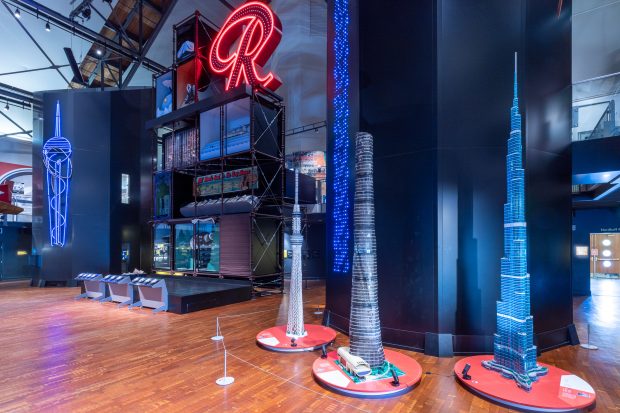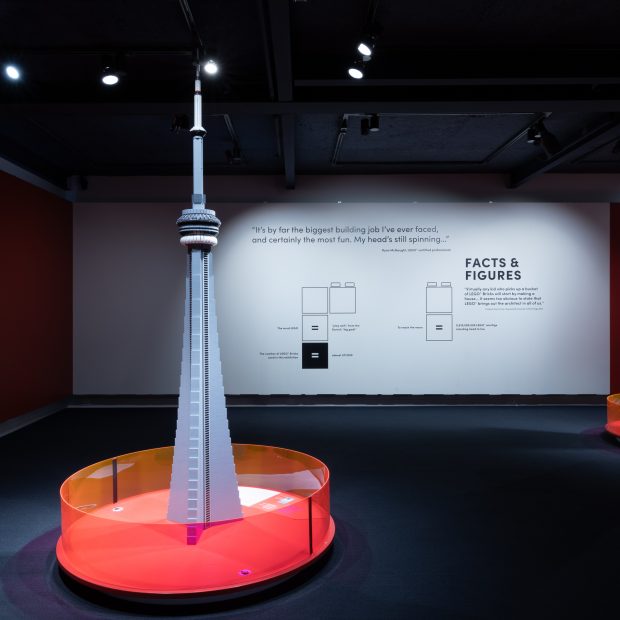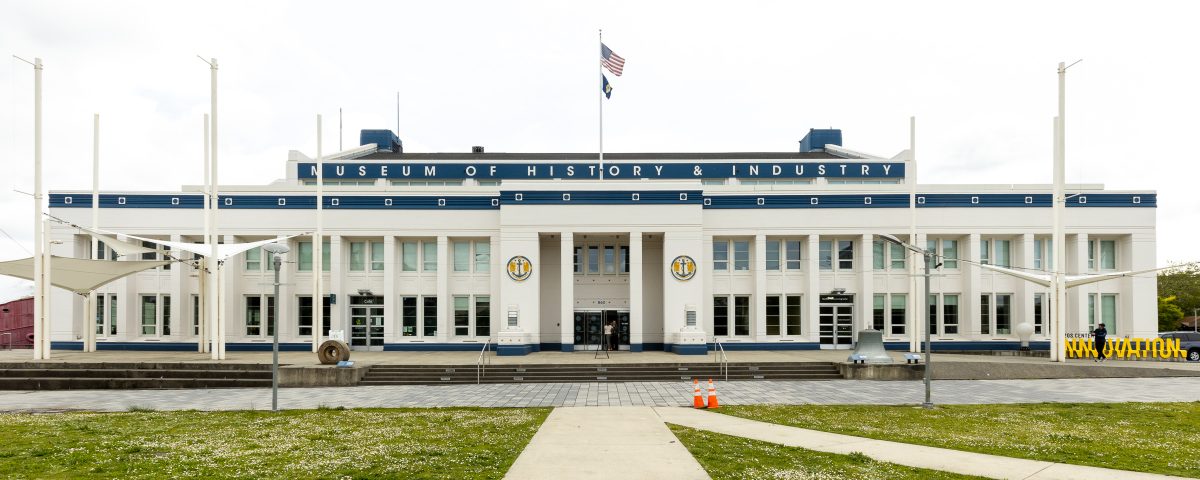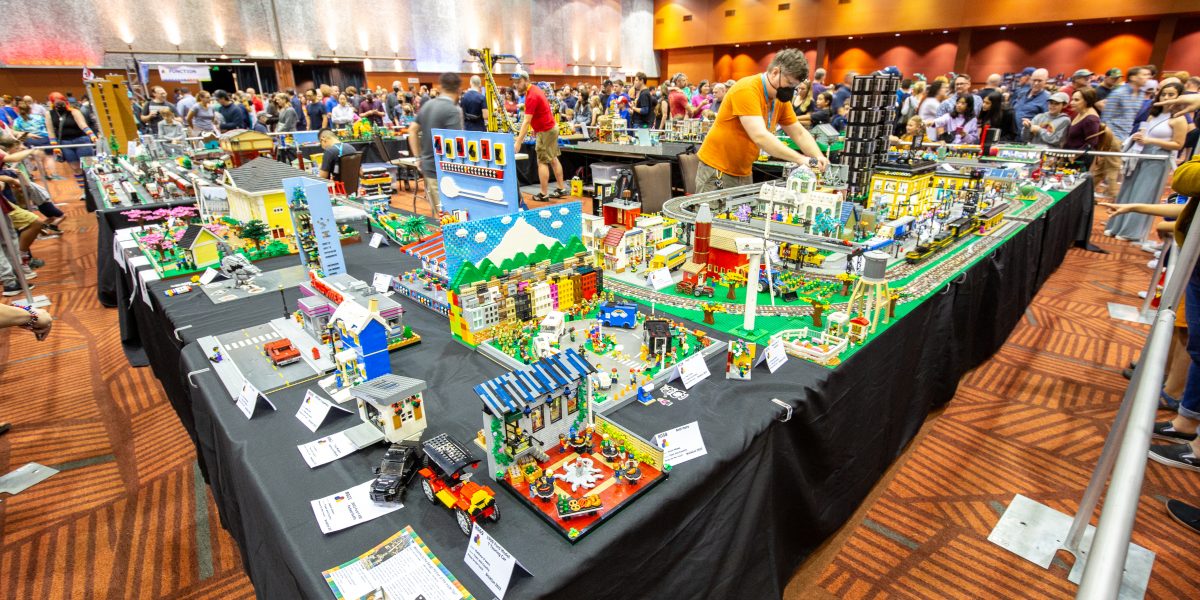Review: Towers of Tomorrow with LEGO Bricks
Let’s take a closer look at this exhibit featuring brick-built skyscrapers, and the role of large touring LEGO shows like this within the LEGO fan community.
The Towers of Tomorrow with LEGO Bricks exhibit is currently on display at the MOHAI museum in Seattle, Washington. I am eager to share a preview of what you will find at the exhibition and tell you about the talented LEGO artist responsible for the show. I also wanted to reflect on the role of large professional LEGO exhibits like this one—and whether they complement or compete with fan events/conventions like BrickCon.
This exhibition opened Saturday May 25, and will be running through September 22, 2024. It features 18 skyscrapers expertly designed and built by LEGO Certified Professional Ryan McNaught (aka Brickman), who is based in Melbourne, Australia.
Museum entrance is $25 for adults, $20 for ages 65+, $19 for Students, and free for ages 14 and user. This includes entrance to the entire museum which includes display about the history of Seattle and the Puget Sound region as a whole.
The Artist
At this point, Ryan McNaught is probably best known for his role as the judge of LEGO Masters Australia, the award winning LEGO reality show. The show began in the UK but has grown into an international phenomena, including four seasons here in the United States with a fifth season rumored for this fall. I have watched many of the international LEGO Masters shows, and agree with many fans who think that Australia show is the best version in the world!

Ryan McNaught (left) shows us how to be both expressive, emotional, and objective as a reality TV judge. (Photo: Channel 9)
This is largely due to Ryan’s warmly paternal approach—forming a deep personal connection to the builders and driving the builders to create the best models they possibly can. He genuinely cares, wants to see everyone succeed, and it absolutely shows.
This same care and attention goes into his large commissioned exhibitions such as this one. Towers of Tomorrow was initially created for Museums of History NSW (New South Wales, Australia) and was adapted into an international touring show by Flying Fish Exhibits.
The Exhibit
To put it simply, the exhibit has two facets – a collection of 18 impressive brick-built skyscrapers, plus 200,000 bricks available for museum guests to build their own creations. As someone with plenty of LEGO bricks at home, I spent most of my time looking at the models on display. I quickly discovered that all of the skyscrapers are built to the same 1:200 scale. this means that you can see therelative size of skyscrapers from around the world by comparing them side-by-side while viewing this exhibit.
The three tallest buildings within the gallery space are displayed on short pedestals which you can walk all the way around to see them from all sides. These buildings are the Willis Tower (formerly Sears Tower) in Chicago, The CN Tower in Toronto, and Taipei 101.
As noted earlier, three of the models are displayed in the lobby instead of the main exhibition. This includes the tallest building in the world, the Burj Kalifa in Dubai, which is too tall to fit inside the smaller gallery space! This does make it harder to compare famous landmarks like the Sears/Willis Tower (tallest in the world from 1973 to 1998), Taipei 101 (tallest from 2004 to 2009), to the Burj Khalifa (tallest since it’s completion in 2010).

Taipei 101 (2004) is displayed next to a large screen showing a documentary about creating this exhibit.
I also want to highlight the excellent documentary that is projected on a large wall in the middle of the gallery space. The video shows Ryan McNaught and his team designing and building many of the LEGO models on display in this gallery.
This video is on display in the gallery, explaining how the models are built.
His clear-spoken explanations of how the models are design, and his passion for building amazing LEGO models are evident when watching the video — and I encourage people visiting the exhibit to include time to watch the 30-minute video after seeing all of the models one time. I went back to see the models again after learning more about how they were built.
A selection of shorter skyscrapers are grouped by region and displayed on four kidney-shaped tables with space underneath to build your own creations.
One table is dedicated to Australia, one to New York City, one for other North American skyscrapers, and one for Singapore and Malaysia. Sitting beneath these impressive creations might inspire you to build something awesome using the LEGO bricks which are provided.
I did find the lighting directly underneath the models a bit distracting from the architecture. (Part of the problem is that the color temperature of the table lighting doesn’t match the room lighting, and the yellowing plexiglass makes this color mismatch even more pronounced.)
I also appreciated a small area dedicated to the history of the LEGO Brick. In the two display cases you will find artifacts explaining the companies transition from a carpentry shop to a wooden toy producer, to the development of the iconic LEGO Brick and later Minifigure.

While most of the exhibit was provided by Ryan’s team, the MOHAI curators added a small section explaining the history of LEGO toys.
Why MOHAI?
I did find myself wondering how this exhibit relates to the broader charter of the MOHAI museum? Practically speaking, the relationship is pretty loose – at best reflecting on global architecture as a way of reflecting on our own city.
That said, smaller local museums need to draw people in. While it is a relatively small exhibit, it fits the space well and will draw people into the museum. Once you are there, the museum hopes you spend some time learning about the history of our city and region as well. This is relevant since the entrance fee gives you access to the entire collection.
Large Touring Shows vs. AFOL Conventions
To be clear, the line between fan builders and professional builders is a bit fuzzy. Many of the LEGO Certified Professionals earned that designation by building increasingly large and impressive models as a hobbyist – graduating to ‘professional’ status is something of a formality for the most talented builders in the world.
The main thing that separates exhibits like this from fan events is the opportunity it affords talented builders like Ryan to create a series of large models around a singular vision. In this case, we get to see Skyscrapers from around the world built to the same scale and with the same aesthetic sensibility. This is only possible because professional builders have the financial support required to build these large models full-time. At most fan events, you can see a ton of impressive LEGO models, but they are typically built by a lot of different builers at different scales and with different styles and skill levels.
Conclusion
This is a good example of how a modest-sized exhibit of impressive LEGO models can inspire people to build amazing LEGO creations of their own. My only reservation is that the cost of admission feels high if you are only coming to see the LEGO exhibit. Thankfully, the MOHAI is an excellent museum in it’s own right, and you should give yourself a few hours to take full advantage of what the museum has to offer.

Building your own skyscrapers beneath iconic North American skyscrapers like the Bank of America Plaza (1992) in Atlanta, GA.
At their best, large traveling exhibits give LEGO enthusiasts of all ages the chance to see what is possible when you have tremendous talent and the budget to purchase ‘unlimited’ LEGO bricks. Towers of Tomorrow with LEGO Bricks reinforces that in world of Skyscrapers—the sky is the limit to your imagination!











Cost of Admission?
Let’s factor in an airplane ride and a night or two in a Hotel.
Still: about the same cash outlay as attending a Seattle Seahawks Football game.
As with most traveling exhibits, I was assuming that the only people who are likely to attend are folks living within driving distance, or perhaps people already visiting the city on vacation.
Naturally, travel cost is not included.